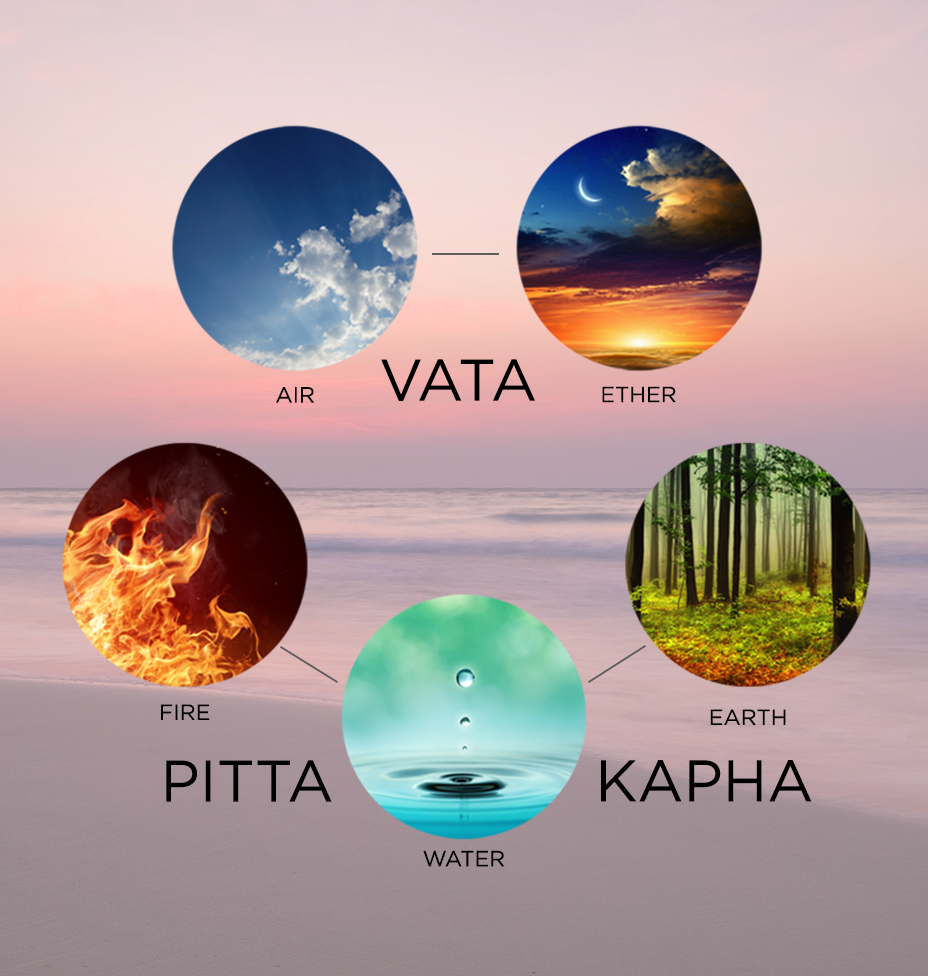AYURVEDA 101

What’s Ayurveda?
Ayurveda is defined as the wisdom of life. It teaches us how to care for, nurture and heal ourselves using nature’s medicine of foods, oils, herbs and lifestyle. Ayurveda is known as the sister science of Yoga and when they are practiced together they not only support each other but they also support us fully to be the best expression of ourselves in this world.
Perfect Health, is your most positive balanced state. It has the elements of balance, energy, resistance to disease, the promotion of healing and an overall sense of wellbeing and vitality.
One of Ayurveda’s core philosophies is the idea that within each of us lays the capacity to live happy, balanced lives, free of pain and disease.
It is impossible to maintain balance at all times, and just like the seasons of nature change, we all go through changes and transitions such as school, career, marriage, family, and geographical moves. When we can recognize how out of balance appears in us, what has thrown us out of balance and have the mindset and tools to get back in balance, then we are truly able to live our life to its fullest.
What is Dosha?
Your Dosha is your essential nature that was given to you at conception. It has two main components, Prakriti, and Vikriti. Your Prakriti is the individual blueprint of your innate tendencies that have been built into your personal mind-body system. It is like your thumbprint. It is what makes each of us different. It is what makes you uniquely you! Prakriti is your essential nature and Vikriti is your current state of being. It is a snapshot of how you are currently managing your life and where you may be out of balance in regard to your essential nature, your Prakriti.
Ayurveda has organized this information into a system of psycho-physiological body types.
There are three main doshas and your unique blueprint is what creates your dosha type. The three main doshas are vata, pitta and kapha. Each of these doshas are a combination of the 5 elements found in nature: earth, water, fire, air and space.
Vata is made up of the elements of air and space
Vata is like wind. It controls movement, and its qualities are cold, dry, light, mobile and erratic.
Pitta is made up of the elements of fire and water
Pitta is like fire. It controls metabolism and its qualities are hot, sharp, light and oily
Kapha is made up of the elements of water and earth
Kapha is like earth. It controls structure and its qualities are cool, moist, stable, heavy and dense.

Every cell in your body contains all three of these doshas and you need all three to stay alive. You need vata, the dosha of motion, to breathe, to circulate your blood, move food through the digestive tract and to think and send nerve impulses to and from the brain.
You need pitta, the dosha of metabolism, to process food, air and water throughout your body.
You need kapha, the dosha of structure, to form muscle, fat, bone, tendons, and ligaments.
All five elements are found in nature, so all five elements are found in you. You can be dominated by one primary dosha, sometimes two, known as bidoshic and sometimes all three, referred to as tridoshic. It’s important to mention that you are not trying to balance all three to an even match, but rather balance yourself to your personal unique combination of the three.
The key to yoga and Ayurveda is discipline.
This discipline is found in creating a lifestyle that best serves you and helps maintain equanimity or balance. Establishing daily routines and seasonal cleanses will help you maintain balance in all areas of your life. Now, this is not to say that you may be thrown an occasional curveball that may create imbalance, but to honor your dosha, to recognize when you are out of balance and to have the tools to get back into and maintain balance is the beautiful gift of Ayurveda and yoga.
Want to learn more? Click the link below to learn more about Maribeth’s Ayurveda programs!
